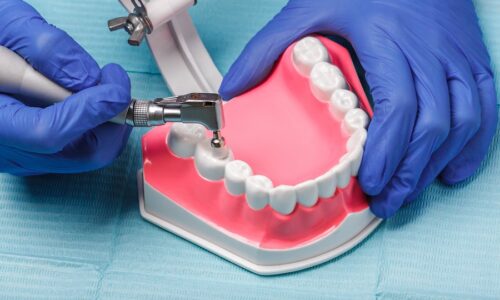Endodontics (Root Canal Treatments)
Endodontic treatment becomes essential when the pulp, the soft tissue within the root canal, becomes inflamed or infected. This inflammation or infection can arise from various causes such as deep decay, repeated dental procedures, or a crack in the tooth. Even without visible damage, an injury to a tooth can lead to pulp damage.
If left untreated, pulp issues can result in pain or an abscess, which is highly painful. Failure to undergo root canal treatment (RCT) may necessitate tooth extraction.
A root canal treatment is a dental procedure designed to eliminate and address deep gum infections, aiming to salvage the tooth from additional damage and loss. Despite a negative reputation, this treatment is pain-relieving, swift, and cost-effective. Rest assured, I have perfected my techniques over the years to prioritize a gentle approach, ensuring your comfort and relaxation while working to save your tooth.

How do root canal treatments work?
Root canal treatments involve several steps:
1. Diagnosis: Examination of the tooth and assesses the need for a root canal based on symptoms, X-rays, and clinical evaluation.
2. Anesthesia: The affected tooth is numbed using local anesthesia to ensure your comfort during the procedure.
3. Access Opening: A small opening is created in the tooth's crown to access the pulp chamber and root canals.
4. Pulp Removal: The damaged or infected pulp is carefully removed from the pulp chamber and the root canals.
5. Cleaning and Shaping: The interior of the tooth is cleaned, and the root canals are shaped to prepare for the filling material with the latest rotary equipment.
6. Disinfection: The cleaned space is disinfected to eliminate any remaining bacteria and prevent future infections.
7. Filling: The root canals are filled with a biocompatible material, often called gutta-percha, I use the latest 3-D techniques to use warm gotta-percha for a superior sealing of the canal space to prevent further bacterial invasion.
8. Sealing the Access Opening: The access opening created in the tooth's crown is sealed with a temporary or permanent filling.
9. Restoration: In most cases, a crown is placed on the treated tooth to restore its strength and functionality.
Root canal treatments are designed to eliminate infection, relieve pain, and preserve the natural tooth. They are crucial for preventing tooth loss due to severe decay or infection.
What happens if the treatment doesn’t work?
Root canal treatment is usually very successful, with long-term success rates of over 85%. However, if the infection comes back other treatment options will be discussed.

